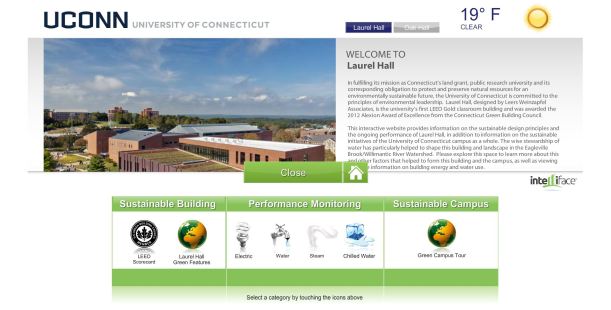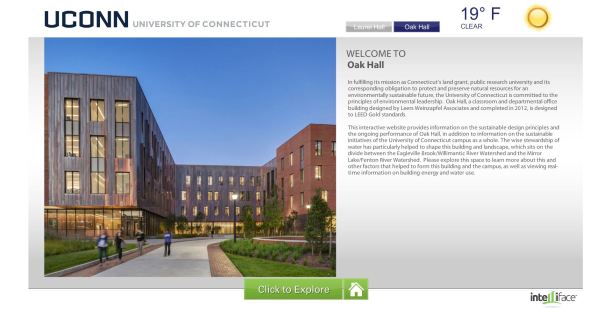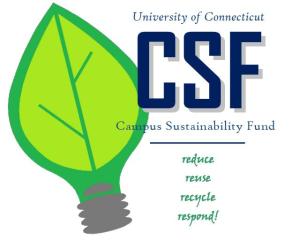Paper, plastic, glass, aluminum, bottles and cans – what do all of these materials have in common? Did you know that all of them can be disposed of in the same recycling bin? Three years ago, the University of Connecticut, with the help of WilliWaste, revitalized its twenty-year-old recycling program and adopted a single-stream recycling system. The goals of the new program are to save even more energy, reduce more waste and further the prevention of pollution. In 2010, it was determined that faculty, staff and students at UConn recycle only about 20% of the disposable materials that they use each day. Since then, UConn has set a new goal of at least 58% by 2024. To expedite the University’s progress towards the lofty, sustainable goal, more than one hundred outdoor recycling bins have been added across campus. Just like the indoor recycling bins, any bin can accept any recyclable material.
Data shows that, since single stream recycling was implemented in 2010, the new program has been successful. The amount of waste tonnage by bottles, cans, and newspaper has significantly decreased as students and staff have started discarding all recyclables into the same container. The amount of waste tonnage by mixed paper and corrugated plastic has also decreased. Therefore, the amount of single streamed waste has grown and continues to do so. The University of Connecticut hopes to see the amount of waste tonnage for single stream recycling increase over the next few years. Ultimately, we wish to achieve our goal of having over half of our disposable materials recycled.
More can be recycled than you think! Books, aluminum foil, and aerosol cans can all go into any recycling container. There are also e-waste containers in several campus locations (Library, Student Union, Co-op) for printer ink or toner cartridges, batteries, and broken electronics.
Today, in 2013, the University has worked diligently to change the way the campus community views the importance of recycling with various events and programs. If you would like to help UConn further its waste reduction initiatives, get involved in the programs meant to promote the importance of recycling to students and to the community. Each year, the Office of Environmental Policy (OEP) teams up with athletics to host three Green Game Days – one football game during the fall semester and two basketball games during the spring semester. At these events, student volunteers encourage fans to recycle their used items instead of throwing them into garbage cans. Volunteers also collect recyclables from tailgate areas at football games, as well as lightly used shoes for donation at basketball games. However, lightly used shoe and sneaker recycling is not a one day event. Throughout the entire spring semester, lightly used shoes and sneakers are collected and donated to the student group Kicks for Africa. The shoes are then shipped and distributed to less fortunate children in African countries.
For other waste reduction, UConn runs a program called Give & Go at the end of each year. Give & Go is an opportunity for students to donate furniture, clothing, school supplies and nonperishable food items as they move out at the end of the semester (for a list of all collected and donated items, visit: http://ecohusky.uconn.edu/recycling/giveandgo.html) . The recycling and reuse program encourages students to donate unwanted belongings to local charities and non-profit organizations instead of throwing them away. And of course we have regular surplus sales at the University Surplus store to send items the University no longer needs to a new home! (There’s one on Friday 8/9/13 – check it out!)
We don’t stop at reusing and recycling – we are also trying to reduce the amount of waste we produce. The University has also opened a composting facility, and Dining Services has removed all trays from dining halls (with the exception of South Campus) to reduce the amount of food waste produced by students. In addition to reducing the amount of food waste generated on the front end, any food that is disposed of is composted in eCorect machines located within the dining halls. By composting organic waste, UConn is reducing the overall volume of waste while re-purposing it to divert waste from landfills.
Next time you have an empty bottle in your hand, remember to recycle it instead of tossing it into a garbage can. Don’t be afraid to lift the lid of any recycling container and make use of UConn’s single stream program. If you are unsure of what can and cannot be recycled, visit our recycling guidelines page or call the Office of Environmental Policy!
– Katie and Meredith









